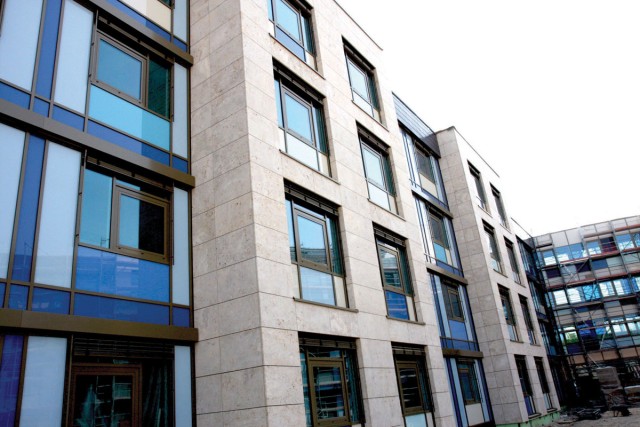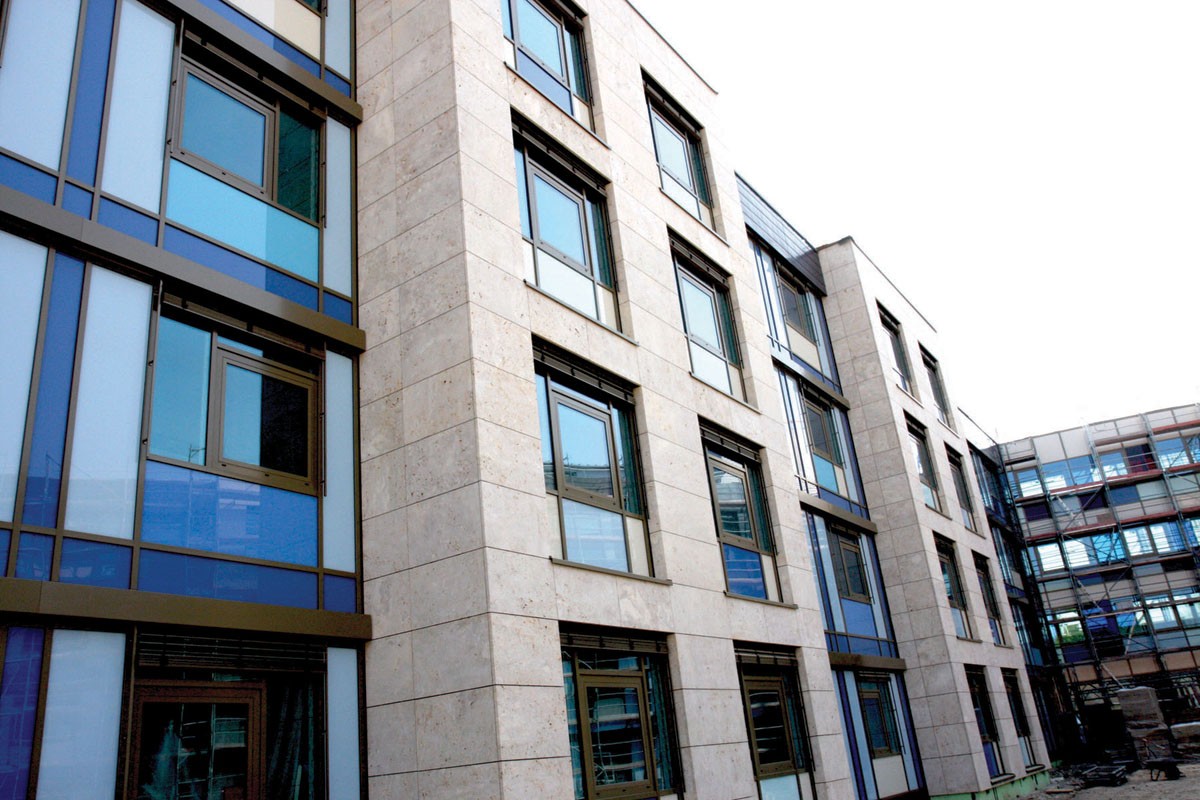WIESBADEN, Germany -- Although the venerable American Arms has been a Wiesbaden mainstay since the 1950s, it's time for an update said Michael Dennis, District construction representative for the lodge. "If you've PCSed or visited Wiesbaden, you'll probably agree with the need for a new lodge," he said.
In a little less than two years from the October 2007 groundbreaking ceremony, this new $36.9 million, 164-room Army Lodge in the Hainerberg military family housing area will have taken shape as one of the most modern-looking buildings in Wiesbaden.
Its ultra-modern multi-colored glass, steel, and concrete faAfASade will encase roughly 22,000 square feet of standard rooms, extended-stay rooms, and family suites, most with kitchenettes.
"The lodge will include pet friendly rooms, a fitness room, guest laundry on each floor, and free continental breakfast," said Patrick Roybal, Europe District's former project manager for the new lodge. "It will include the typical standard amenities found in hotels on the economy but at more reasonable rates."
Besides the modern design, the lodge is the first to use standardized "puzzle-piece" room designs, which engineers say will be used for all future Army lodges in Europe.
Across from the new parking lot and landscaping area will be a $10 million multi-family entertainment center that will include a restaurant, 16-lane bowling center, billiards hall, dance club, slot machines, and party/meeting rooms.
And the new access roads will connect it easily with the rest of the facilities in the Hainerberg area, including the PX, commissary, and DoDDS schools.
"The commissary and the PX and the shopping area are within walking distance," said Michael Dennis, District construction representative. "And for military families PCS'ing, that would be very convenient."
Since the site's groundbreaking, the Family and Morale Welfare and Recreation Command (FMWRC) and the local contractor, Hessisches Baumanagement, have worked hard to ensure that the lodge stays on budget and on schedule.
Unlike similar facilities constructed stateside, the Wiesbaden lodge is built using German construction methods, said Dennis. For stability, the foundation is reinforced with multiple concrete columns that reach deep into the ground. And for soundproofing, the walls contain double layers of gypsum board.
It will also retain the force protection standards common in American military facilities, said Horst Engelke, a structural engineer with the District. The building's force protection windows and faAfASades "have been reviewed against the blast of vehicle bombs with a standoff distance of 45 meters," he said.
"The Corps of Engineers appreciates this opportunity to improve the quality of life for servicemembers, families, and civilians of the Wiesbaden Military Community," said Dennis. "We believe that this lodge marks a significant contribution and we are pleased to be a part of this project."
The construction of the lodge is part of a five-year transformation for the Wiesbaden Military Community that began in 2007. "There were projects awarded at the end of fiscal year 2007, but the construction for the Military Retention Intelligence Brigade, which was the first major unit to move to Wiesbaden, occurred in 2008," explained Roger Gerber, U.S. Army Garrison Wiesbaden's Transformation Stationing Management Office chief. "And now we are doing the renovation for the Signal Command. As for new construction, the lodge is the first major MILCON [military construction] project."
In addition to the new lodge, the transformation currently includes roughly $250 million in design and construction in Wiesbaden, including $60 million in Army family housing renovations, a $60 million command and control center at the Wiesbaden Army Airfield, and about $100 million to construct 126 new housing units, said Gerber.
Another $250 million in design and construction, including more operational facilities for incoming units and more support facilities like a new PX and commissary, will be put into the Wiesbaden community in the near future.
The new construction is part of USAREUR's goal throughout Europe to "become more efficient in the main operating bases," said Gerber. To accomplish this, some bases will be returned back to their respective host nations while others, like Wiesbaden, mushroom to accept displaced units.
As for the American Arms Hotel: "It's been announced for return to its nation, but the date is left to be determined," explained Gerber. The hotel is made up of two towers-one that is used as lodging, and the other as office space.
"We may turn one tower over before the other - that has not been determined yet," said Gerber. "The office tower we are going to need until we are done with all construction and renovation in Wiesbaden."






Social Sharing